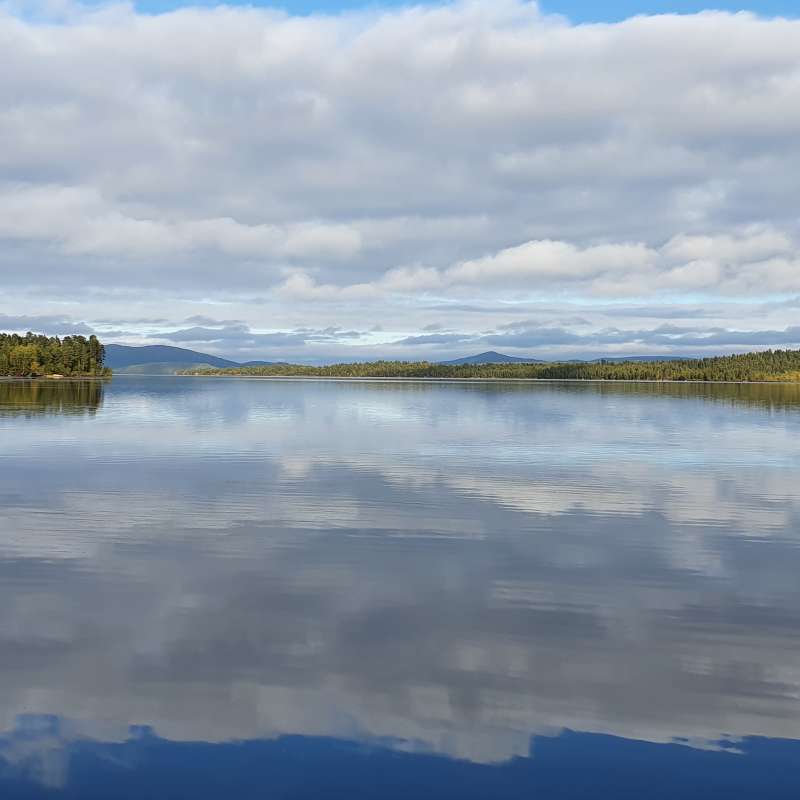Hallvard Jensen
Research Scientist
Abstract
A survey was conducted in Porsangmoen-Halkavarre shooting and training range. This report summarizes the results of exploratory fishing and extensive environmental surveys carried out in 2024 in five lakes: Store Ikkasvann (Stuorra Inggasjávri), Lille Ikkasvann (Unna Inggasjávri), almijervi (Coalbmejávri), Lille Russevann (Bajit Russojávri) and Store Russevann (Stuorra Russojávri), as well as in Ørretbekken, an important spawning stream for the trout (Salmo trutta) population in Store Ikkasvann (Stuorra Inggasjávri). The study includes catch-per-unit-effort (CPUE, species distribution, growth and biometrics), water chemical and physical analyses, sediment studies, as well as observations of macrophytes and habitat conditions. The aim was to document variations in fish communities and ecological status, and to identify possible environmental challenges that may affect future management and conservation of the resources in the area. The findings show that trout predominate in the shallow areas (0–6 m deep) of Store Ikkasvann (Stuorra Inggasjávri) and Lille Ikkasvann (Unna Inggasjávri), while char (Salvelinus alpinus) is more abundant in the deeper water layers. In Salmijervi (Coalbmejávri), the species distribution is more balanced, while Store Russevann (Stuorra Russojávri) and Lille Russevann (Bajit Russojávri) are characterized by a higher density of char. Minnow (Phoxinus phoxinus) was found in three of the lakes, especially in shallow areas, which can affect traut grawth thraugh competition and predation. Biometric analyses indicate that traut graw fastest in Lille Russevann (Bajit Russojåvri) (with 5.1 cm annual grawth) and slowest in Salmijervi (Coalbmejåvri) (4.3 cm), while char maintains a steady growth of about 5 cm per year. Colour differences in fish meat·suggest that a high percentage of traut from Store Russevann (Stuorra Russojåvri) and Lille Russevann (Bajit Russojåvri), and both traut and char from Store Ikkasvann (Stuorra Inggasjåvri) and Lille Ikkasvann (Unna Inggasjåvri) have a more reddish color, possibly due to a higher intake of crustaceans. The parasite occurrence in traut and char was generally low, except for fish in Salmijervi (Coalbmejåvri), where increased bird activity may have led to higher infection rates. Water chemistry measurements showed that most water bodies have good water quality with low concentrations of lead, same copper and zinc, relatively low nutrient concentrations, a high con tent of calcium carbonate and thus stable pH values (7-8). At the same time, the analyses oflake sediments indicate good condition for lead (which is an EU priority substance), but occasionally poor to very poor status for copper and chramium, as well as high concentrations of nickel. Nickel, copper and chramium occur naturally in minerals in the catchment area. A mapping of bioaccumulation of heavy metals could be done to get an idea of base line concentrations in fish in the area. Observations of heteratraphic grawth increasing down the watercourse, possibly associated with sewage discharges or other organic loads, underscore the need for DNA-based source tracing to precisely define the sources of pollution. The traut stream, which maintains high densities of traut and is in very good ecological condition, must be managed with special consideration, where raad construction and other activities must be thoraughly assessed with risk analyses, strict mass management and sediment control. Overall, the report shows that the ecological water quality is good to very good, and fish stocks in most of the lakes have good spawning and grawth conditions, with same regional differences related to habitat use and grawth conditions. The management should adopt a holistic, catchment-oriented approach to new interventions in the area, with a fous on minimising the impact on water bodies and ensuring sustainable use of resources. More detailed suggestions are mentioned in the report, which forms a basis for further monitoring and enviranmental measures to preserve biodiversity and , maintain the good ecological status of the entire area.
Abstract
No abstract has been registered

